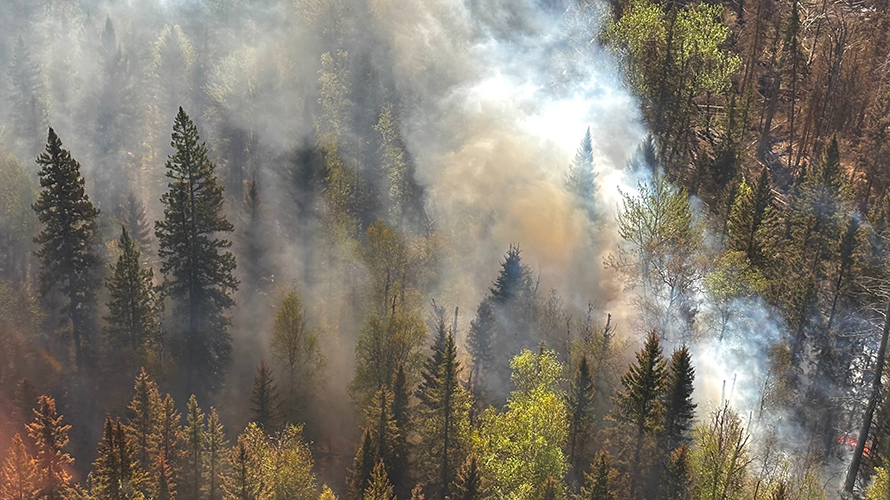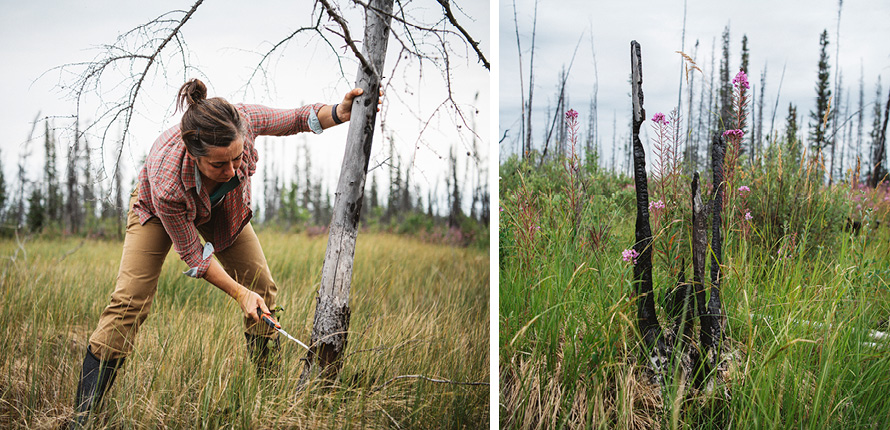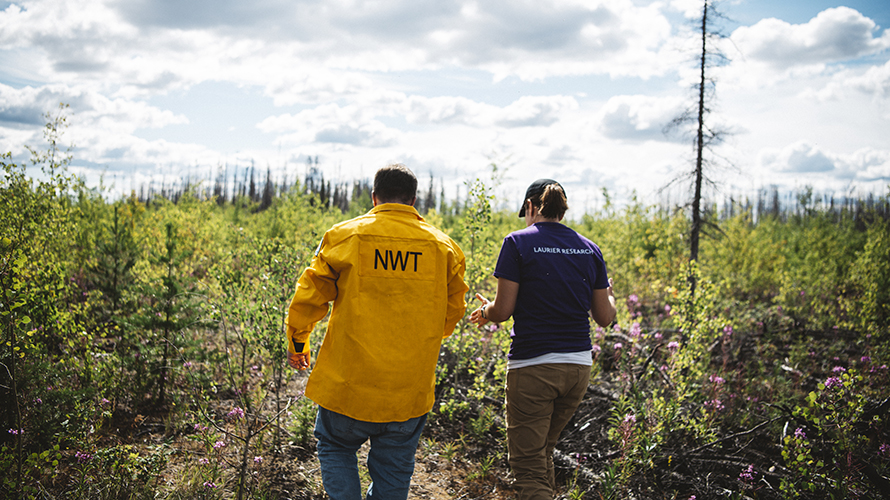We use cookies on this site to enhance your experience.
By selecting “Accept” and continuing to use this website, you consent to the use of cookies.
Search for academic programs, residence, tours and events and more.
March 24, 2025
For Immediate Release
WATERLOO – A new study from Wilfrid Laurier University offers a rare “good news story” in relation to forest fires. Jennifer Baltzer, the Canada Research Chair in Forests and Global Change, published the first-ever field data on overwintering fires – also known as “zombie” fires – which continue to smoulder throughout the winter and reignite the following spring. Despite fears that zombie fires would increase carbon release and hinder forest regrowth, Baltzer’s data suggests that they are less destructive than anticipated.
Between 2022 and 2023, Baltzer and her colleagues were the first in the world to collect samples at overwintering fire sites. They visited 20 locations in the boreal forests of Alaska and the Northwest Territories that had originally burned in 2009 or 2014.

Baltzer pictured in a regenerating forest in the Northwest Territories
Scientists had predicted that overwintering would happen primarily in deep, peaty soils that would allow fire to continue smouldering. Because boreal peatlands store vast quantities of carbon, that could mean huge amounts of additional carbon being released into the atmosphere. However, Baltzer’s research shows that more often than not, overwintering fires are actually happening in “upland” locations – productive forests on higher ground with good drainage and thinner layers of organic, carbon-rich soil.
“Our findings suggest that smouldering is happening more commonly in the roots and trunks of trees, as opposed to deep organic soils,” says Baltzer. “In some ways, this is a good news story because there doesn’t seem to be as big of an impact on the main carbon stocks of these high-latitude forests.”

Overwintering fire smoulders in a boreal forest
Baltzer was also surprised to discover that zombie fires did not seem to impact a forest’s ability to recover.
“We thought there could be poor regeneration or even regeneration failure because you have two fires burning through the same forest in two years, potentially killing seeds before they can produce new trees,” says Baltzer. “Instead, we found very strong rates of regrowth. There were no differences between single season and overwintering fires.”
One notable impact Baltzer observed was a change in the type of trees growing back following overwintering fires. Her past research has shown single-season fires driving a shift from conifer to deciduous trees in boreal forests in western North America, and the same trend was exaggerated with overwintering. Every single conifer-dominated overwintering site they sampled converted to deciduous dominance.
A shift in tree species is not inherently negative, Baltzer says; it really depends on the ecosystem functions you’re concerned about.
“From a caribou habitat perspective, loss of spruce forests is a problem because deciduous trees don’t support the growth of caribou lichen, which they forage on in the winter,” says Baltzer. “From a fire perspective, aspen trees, which are deciduous, are less flammable than conifers and can slow or stop the progression of fire, serving as a natural fire break on the landscape. So the impacts vary, but what is important is that we haven’t seen a species shift like this in these forests in thousands of years. More than anything, it’s an indicator of climate change rapidly affecting this biome.”

Left: Baltzer gathering measurements at a fire site in the Northwest Territories that burned in 2014; Right: Fireweed growing as the forest regenerates
So what are the next steps for Baltzer and her team? 2023 saw an unprecedented amount of burning in the Northwest Territories, including widespread overwintering, offering the opportunity to expand their sampling efforts in the region. Climate warming is altering fire behaviour in other unexpected ways as well. For example, the 2023 fire season saw forests burning again less than 10 years after they last burned.
“Forests younger than 30 years old would typically act as a natural fire break,” says Baltzer. “If there was a young forest surrounding a community, we would assume the community would be safe. But 2023 blew that out of the water because there were huge swaths of young forest burning.”
 Baltzer (right) collaborates with Rick Olsen, manager of Fire Operations for the Government of the Northwest Territories
Baltzer (right) collaborates with Rick Olsen, manager of Fire Operations for the Government of the Northwest Territories
Baltzer continues to work closely with the Government of the Northwest Territories’ fire management team to re-evaluate post-fire changes in boreal forests and how to support the resilience of northern communities and the forests they rely on. She will return to the North this summer to resume her research.
“There is a lot of work to do to understand how to support good fire on the landscape and prevent some of these really big, catastrophic fires from encroaching on communities and damaging ecosystems.”
– 30 –
Media Contacts:
Lori Chalmers Morrison, Director: Integrated Communications
External Relations, Wilfrid Laurier University